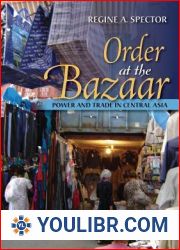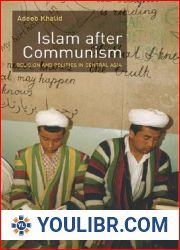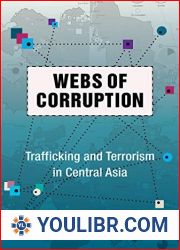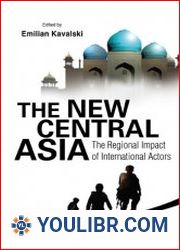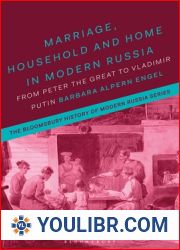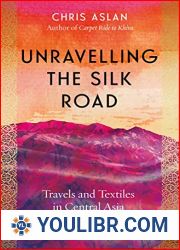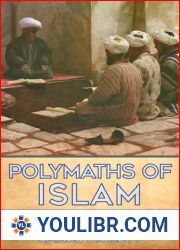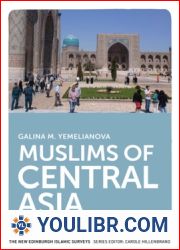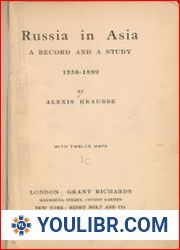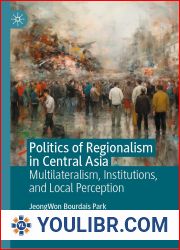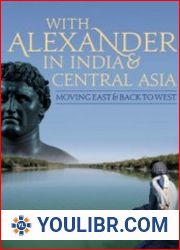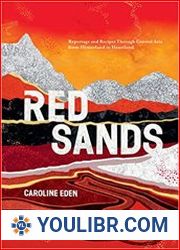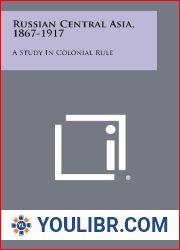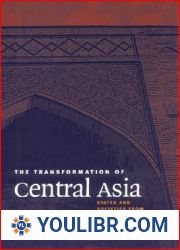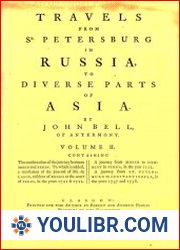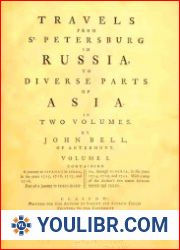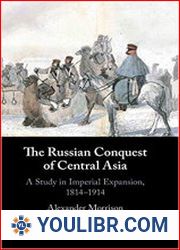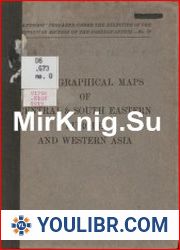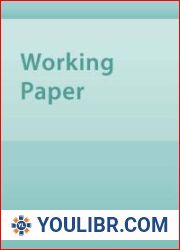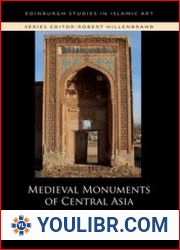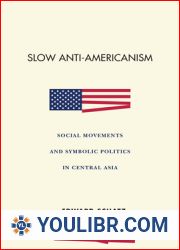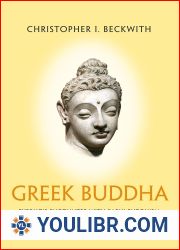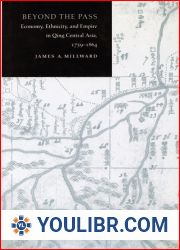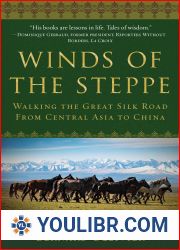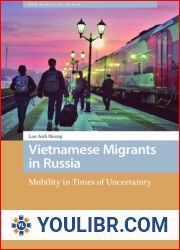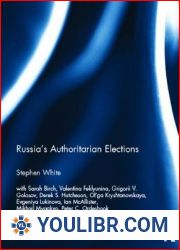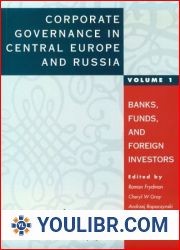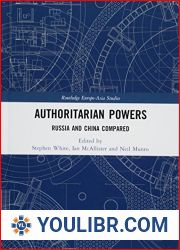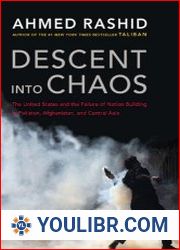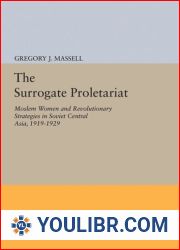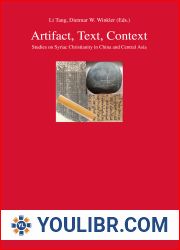
BOOKS - HISTORY - A History of Russia, Central Asia and Mongolia. Volume II. Inner Eu...

A History of Russia, Central Asia and Mongolia. Volume II. Inner Eurasia from the Mongol Empire to Today, 1260 - 2000
Author: David Christian
Year: 2018
Format: PDF
File size: 12.8 MB
Language: ENG

Year: 2018
Format: PDF
File size: 12.8 MB
Language: ENG

The book concludes with an analysis of the current situation in Central Asia and Mongolia as they face the challenges of the twenty-first century. A History of Russia, Central Asia, and Mongolia Volume II: Inner Eurasia from the Mongol Empire to Today 1260-2000 The Mongol Empire's collapse in the mid-thirteenth century marked the beginning of a new era in the history of Inner Eurasia, a vast region stretching from Siberia to Mongolia. In this second volume of A History of Russia, Central Asia, and Mongolia, we explore the remarkable story of this region from 1260 to modern times, focusing on the concept of "mobilization" - how elite groups mobilized resources from their populations and how these methods were shaped by the unique ecology of Inner Eurasia. From Agriculture to Fossil Fuels As agriculture spread through Inner Eurasia, new agricultural states emerged, including the Russian Empire. We examine how this transformation shaped the history of the region and how it differed from the southern half of Eurasia, known as Outer Eurasia.
Книга завершается анализом текущей ситуации в Центральной Азии и Монголии, поскольку они сталкиваются с проблемами двадцать первого века. A History of Russia, Central Asia, and Mongolia Volume II: Inner Eurasia from the Mongol Empire to Today 1260-2000 Распад Монгольской империи в середине тринадцатого века ознаменовал начало новой эры в истории Внутренней Евразии, обширного региона, простирающегося от Сибири до Монголии. В этом втором томе «Истории России, Центральной Азии и Монголии» мы исследуем примечательную историю этого региона от 1260 года до современности, сосредоточив внимание на концепции «мобилизации» - как элитные группы мобилизовали ресурсы из своего населения и как эти методы были сформированы уникальной экологией Внутренней Евразии. От сельского хозяйства к ископаемому топливу По мере распространения сельского хозяйства во Внутренней Евразии появились новые сельскохозяйственные государства, включая Российскую империю. Мы исследуем, как эта трансформация сформировала историю региона и чем она отличалась от южной половины Евразии, известной как Внешняя Евразия.
livre se termine par une analyse de la situation actuelle en Asie centrale et en Mongolie, qui sont confrontées aux défis du XXIe siècle. A History of Russia, Central Asia, and Mongolia Volume II : Inner Eurasia from the Mongol Empire to Today 1260-2000 L'effondrement de l'Empire mongol au milieu du XIIIe siècle marque le début d'une nouvelle ère dans l'histoire de l'Eurasie intérieure, une vaste région qui s'étend de bérie à S Mongolie. Dans ce deuxième volume, « L'histoire de la Russie, de l'Asie centrale et de la Mongolie », nous explorons l'histoire remarquable de cette région de 1260 à nos jours, en nous concentrant sur le concept de « mobilisation » - comment les groupes d'élite ont mobilisé les ressources de leur population et comment ces méthodes ont été façonnées par l'écologie unique de l'Eurasie intérieure. De l'agriculture aux combustibles fossiles À mesure que l'agriculture s'étend en Eurasie intérieure, de nouveaux États agricoles, y compris l'Empire russe, sont apparus. Nous étudions comment cette transformation a façonné l'histoire de la région et en quoi elle s'est distinguée de la moitié sud de l'Eurasie, connue sous le nom d'Eurasie extérieure.
libro concluye con un análisis de la situación actual en Asia Central y Mongolia, ya que se enfrentan a los desafíos del siglo XXI. A History of Russia, Central Asia, and Mongolia Volume II: Inner Eurasia from the Mongol Empire to Today 1260-2000 colapso del Imperio mongol a mediados del siglo XIII marcó el comienzo de una nueva era en la historia de Eurasia Interior, una vasta región, que se extiende desde beria hasta Mongolia. En este segundo volumen de la Historia de Rusia, Asia Central y Mongolia, exploramos la notable historia de esta región desde 1260 hasta la modernidad, centrándonos en el concepto de «movilización» - cómo los grupos de élite movilizaron recursos de su población y cómo estos métodos fueron formados por la ecología única de Eurasia Interior. De la agricultura a los combustibles fósiles A medida que la agricultura se extendía, surgieron nuevos estados agrícolas en Eurasia Interior, incluido el Imperio ruso. Estamos investigando cómo esta transformación dio forma a la historia de la región y en qué se diferenciaba de la mitad sur de Eurasia, conocida como Eurasia Exterior.
O livro é concluído por uma análise da situação atual na Ásia Central e na Mongólia, já que eles enfrentam problemas do século XXI. A História da Rússia, Ásia Central, Mongólia Volume II: Inner Eurasia from the Mongol Empire to Today 1260-2000 A desintegração do Império Mongol marcou o início de uma nova era na história da Eurásia Interior, uma vasta região que se estende da béria Vai até a Mongólia. Neste segundo volume, «A História da Rússia, Ásia Central e Mongólia», exploramos a notável história desta região desde 1260 até a modernidade, com foco no conceito de «mobilização» - como os grupos de elite mobilizaram recursos de suas populações e como estes métodos foram formados pela ecologia única da Eurásia Interior. Da agricultura aos combustíveis fósseis À medida que a agricultura se espalha, novos estados agrícolas surgiram na Eurásia Interna, incluindo o Império Russo. Estamos a investigar como essa transformação moldou a história da região e o que era diferente da metade sul da Eurásia, conhecida como Eurásia Externa.
Il libro si conclude con un'analisi della situazione attuale in Asia centrale e Mongolia, in quanto affrontano le sfide del ventunesimo secolo. A History of Russia, Central Asia, and Mongolia Volume II: Inner Eurasia from the Mongol Empire to Today 1260-2000 La dissoluzione dell'impero mongolo a metà del tredicesimo secolo segnò l'inizio di una nuova era nella storia dell'Eurasia interna, una vasta regione che si estende dalla beria I dadi fino in Mongolia. In questo secondo volume, « storie della Russia, dell'Asia centrale e della Mongolia», esploriamo la notevole storia della regione dal 1260 alla modernità, focalizzandoci sul concetto di «mobilitazione» - come i gruppi di elite hanno mobilitato le risorse dalla loro popolazione e come queste tecniche sono state formate dall'ambiente unico dell'Eurasia interna. Dall'agricoltura ai combustibili fossili Mentre l'agricoltura si espande, nell'Eurasia interna sono nati nuovi stati agricoli, compreso l'impero russo. Stiamo indagando su come questa trasformazione abbia creato la storia della regione e su cosa fosse diversa dalla metà sud dell'Eurasia, conosciuta come Eurasia esterna.
Das Buch schließt mit einer Analyse der aktuellen tuation in Zentralasien und der Mongolei, die sich den Herausforderungen des 21. Jahrhunderts stellen. A History of Russia, Central Asia, and Mongolia Volume II: Inner Eurasia from the Mongol Empire to Today 1260-2000 Der Zerfall des mongolischen Reiches Mitte des dreizehnten Jahrhunderts markierte den Beginn einer neuen Ära in der Geschichte des Inneren Eurasiens, einer riesigen Region, die sich von birien bis zur Mongolei erstreckte. In diesem zweiten Band „Geschichten aus Russland, Zentralasien und der Mongolei“ untersuchen wir die bemerkenswerte Geschichte dieser Region von 1260 bis zur Gegenwart und konzentrieren uns dabei auf das Konzept der „Mobilisierung“ - wie Elitegruppen Ressourcen aus ihrer Bevölkerung mobilisierten und wie diese Methoden von der einzigartigen Ökologie des Inneren Eurasiens geprägt wurden. Von der Landwirtschaft zu fossilen Brennstoffen Als sich die Landwirtschaft im inneren Eurasien ausbreitete, entstanden neue Agrarstaaten, einschließlich des russischen Reiches. Wir untersuchen, wie diese Transformation die Geschichte der Region prägte und wie sie sich von der südlichen Hälfte Eurasiens, bekannt als äußeres Eurasien, unterschied.
Książka kończy się analizą obecnej sytuacji w Azji Środkowej i Mongolii w obliczu wyzwań XXI wieku. Historia Rosji, Azji Środkowej i Mongolii tom II: Wewnętrzna Eurazja od Imperium Mongolskiego do dziś 1260-2000 Upadek Imperium Mongolskiego w połowie trzynastego wieku oznaczał początek nowej ery w historii wewnętrznej Eurazji, rozległy region rozciągający się od Syberii do Mongolii. W tym drugim tomie, „Historie Rosji, Azji Środkowej i Mongolii”, badamy niezwykłą historię tego regionu od 1260 roku do czasów współczesnych, skupiając się na koncepcji „mobilizacji” - jak elitarne grupy mobilizowały zasoby z ich populacji i jak metody te ukształtowały się dzięki unikalnej ekologii wewnętrznej Eurazji. Od rolnictwa do paliw kopalnych Wraz z rozwojem rolnictwa w Eurazji Wewnętrznej pojawiły się nowe państwa rolne, w tym Imperium Rosyjskie. Badamy, jak ta transformacja kształtowała historię regionu i jak różniła się od południowej połowy Eurazji, znanej jako Eurazja Zewnętrzna.
הספר מסכם בניתוח של המצב הנוכחי במרכז אסיה ומונגוליה כשהם ניצבים בפני אתגרים במאה העשרים ואחת. היסטוריה של רוסיה, מרכז אסיה, ומונגוליה כרך II: אירואסיה הפנימית מהאימפריה המונגולית ועד ימינו 1260-2000 התמוטטות האימפריה המונגולית באמצע המאה ה-13 סימנה את תחילתה של תקופה חדשה בהיסטוריה של אירואסיה הפנימית, אזור נרחב המשתרע מסיביר עד מונגוליה בכרך שני זה, ”היסטוריות רוסיה, מרכז אסיה ומונגוליה”, אנו חוקרים את ההיסטוריה המדהימה של אזור זה משנת 1260 ועד ימינו, תוך התמקדות במושג ”גיוס” - כיצד קבוצות עילית גייסו משאבים מאוכלוסייתן, וכיצד שיטות אלו עוצבו על ידי האקולוגיה הייחודית של אירואסיה הפנימית. מחקלאות לדלקי מאובנים, כאשר החקלאות התרחבה באירואסיה הפנימית, נוצרו מדינות חקלאיות חדשות, כולל האימפריה הרוסית. אנו חוקרים כיצד שינוי זה עיצב את ההיסטוריה של האזור וכיצד הוא שונה מהמחצית הדרומית של אירואסיה, המכונה אירואסיה החיצונית.''
Kitap, Orta Asya ve Moğolistan'ın yirmi birinci yüzyılın zorluklarıyla karşı karşıya kaldığı mevcut durumun bir analizi ile sona eriyor. Rusya, Orta Asya ve Moğolistan Tarihi Cilt II: Moğol İmparatorluğu'ndan Günümüze İç Avrasya 1260-2000 On üçüncü yüzyılın ortalarında Moğol İmparatorluğu'nun çöküşü, birya'dan Moğolistan'a uzanan geniş bir bölge olan İç Avrasya tarihinde yeni bir dönemin başlangıcına işaret ediyordu. "Histories of Russia, Central Asia, and Mongolia" (Rusya, Orta Asya ve Moğolistan'ın Tarihleri) adlı bu ikinci ciltte, 1260'tan modern zamanlara kadar bu bölgenin dikkate değer tarihini inceliyoruz, "mobilizasyon" kavramına odaklanıyoruz - seçkin grupların kendi nüfuslarından kaynakları nasıl harekete geçirdikleri ve bu yöntemlerin İç Avrasya'nın eşsiz ekolojisi tarafından nasıl şekillendirildiği. Tarımdan Fosil Yakıtlara İç Avrasya'da tarım genişledikçe, Rus İmparatorluğu da dahil olmak üzere yeni tarım devletleri ortaya çıktı. Bu dönüşümün bölgenin tarihini nasıl şekillendirdiğini ve Dış Avrasya olarak bilinen Avrasya'nın güney yarısından nasıl farklı olduğunu araştırıyoruz.
ويختتم الكتاب بتحليل للوضع الراهن في آسيا الوسطى ومنغوليا في مواجهة تحديات القرن الحادي والعشرين. تاريخ روسيا وآسيا الوسطى ومنغوليا المجلد الثاني: أوراسيا الداخلية من الإمبراطورية المغولية إلى اليوم 1260-2000 شكل انهيار الإمبراطورية المغولية في منتصف القرن الثالث عشر بداية حقبة جديدة في تاريخ أوراسيا الداخلية، وهي منطقة شاسعة تمتد من سيبيريا إلى منغوليا في هذا المجلد الثاني، «تاريخ روسيا وآسيا الوسطى ومنغوليا»، نستكشف التاريخ الرائع لهذه المنطقة من عام 1260 إلى العصر الحديث، مع التركيز على مفهوم «التعبئة» - كيف حشدت مجموعات النخبة الموارد من سكانها، وكيف تم تشكيل هذه الأساليب من خلال البيئة الفريدة لأوراسيا الداخلية. من الزراعة إلى الوقود الأحفوري مع توسع الزراعة في أوراسيا الداخلية، ظهرت دول زراعية جديدة، بما في ذلك الإمبراطورية الروسية. نستكشف كيف شكل هذا التحول تاريخ المنطقة وكيف اختلف عن النصف الجنوبي من أوراسيا، المعروف باسم أوراسيا الخارجية.
이 책은 21 세기 도전에 직면 한 중앙 아시아와 몽골의 현재 상황에 대한 분석으로 마무리됩니다. 러시아, 중앙 아시아 및 몽골 제 2 권: 몽골 제국에서 오늘 1260-2000 년까지의 유라시아 내륙 13 세기 중반 몽골 제국의 붕괴는 내부 유라시아 역사에서 새로운 시대의 시작을 의미했습니다. 시베리아에서 몽골까지 광대 한 지역. 이 두 번째 책인 "러시아, 중앙 아시아 및 몽골의 역사" 에서 우리는 1260 년부터 현대까지이 지역의 놀라운 역사를 탐구합니다. 이러한 방법은 내부 유라시아의 독특한 생태학에 의해 어떻게 형성되었습니까? 유라시아 내륙에서 농업이 확대됨에 따라 러시아 제국을 포함한 새로운 농업 국가가 등장했습니다. 우리는이 변화가이 지역의 역사를 어떻게 형성했으며 유라시아 외곽으로 알려진 유라시아 남부와 어떻게 다른지 탐구합니다.
この本は、21世紀の課題に直面している中央アジアとモンゴルの現状を分析して結論付けています。ロシア、中央アジア、モンゴルの歴史第2巻:モンゴル帝国から今日までのユーラシア内部1260-2000 13世紀半ばのモンゴル帝国の崩壊は、シベリアからモンゴルにかけて広大な地域であったユーラシア内部の歴史の新しい時代の始まりを示しましたゴリアだ。第2巻「ロシア、中央アジア、モンゴルの歴史」では、1260から現代にかけてのこの地域の驚くべき歴史を探り「、動員」という概念に焦点を当て、エリート集団がどのようにして彼らの集団から資源を動員し、これらの方法がどのようにして内部ユーラシアのユニークな生態学によって形成されたかを調べます。農業から化石燃料へ内ユーラシアで農業が拡大するにつれて、ロシア帝国を含む新しい農業国家が誕生しました。私たちは、この変容がどのようにしてこの地域の歴史を形作ったのか、そしてアウター・ユーラシアと呼ばれるユーラシアの南半分との違いを探ります。
本書最後分析了中亞和蒙古目前面臨二十一世紀挑戰的局勢。俄羅斯,中亞和蒙古的歷史,第二卷:從蒙古帝國到今天1260-2000蒙古帝國的衰敗標誌著內歐亞大陸歷史上的新時代的開始,從西伯利亞延伸到蒙古。在第二卷《俄羅斯,中亞和蒙古的歷史》中,我們探索了該地區從1260到現代的顯著歷史,重點研究了「動員」的概念-精英團體如何從其人口中調動資源以及這些方法如何由內歐亞大陸的獨特生態學形成。從農業到化石燃料隨著農業在內歐亞大陸的擴散,出現了包括俄羅斯帝國在內的新農業國家。我們正在研究這種轉變如何塑造該地區的歷史,以及它與歐亞大陸南半部(稱為外歐亞大陸)的不同之處。







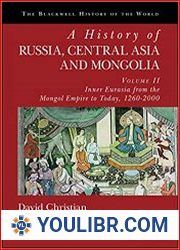
 49
49  2 TON
2 TON

